IAC News
IAC News No.82, August 2019
Japan Society of Civil Engineers International Activities Center August 1, 2019 IAC News No.82
The Importance of Civil Engineering in the New Reiwa Era
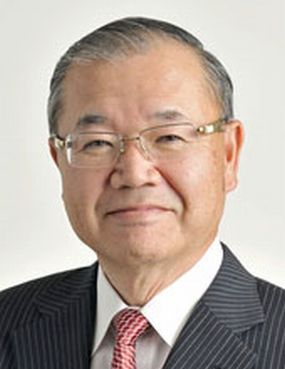
Yasuo Hayashi
107th JSCE President
With the passing of the Heisei era, the new era of Reiwa has begun. The Japan Society of Civil Engineers (JSCE), too, is embarking on new efforts. In 2014, the 100th anniversary of JSCE, the 100-Year Vision “Transcending the Boundaries of Civil Engineering to Construct the Foundation for a Sustainable Society” was declared, and the JSCE2015 action plan was formulated. 2019 will be the final fiscal year of JSCE2015, when we look back at our past activities, clarify the achievements and challenges, and formulate JSCE2020 that connects us to the next generation.
Today, the civil engineering industry is in a time of unprecedented change.
First, major natural disasters caused by climate change, etc. are occurring frequently throughout Japan. For example, last year, there was an earthquake in northern Osaka in June, floods in western Japan in July, and Typhoon Jebi and Hokkaido Eastern Iburi Earthquake in September. In addition, there is concern about Nankai megathrust earthquakes and an earthquake directly striking the Tokyo metropolitan area. Early disaster prevention and mitigation measures against such natural disasters and great earthquakes are required.
Accordingly, in December 2018 the government formulated the “Three-year Emergency Response Plan” for disaster prevention, disaster mitigation, and building national resilience, with a budget of 7 trillion yen. JSCE will need not only to implement those emergency measures steadily, but also to carry out its own disaster prevention and mitigation efforts in terms of both hardware and software aspects, to establish a safe and secure society.
Secondly, most of the infrastructures in Japan were constructed during the period of rapid economic growth and are rapidly deteriorating. The ratio of infrastructures that were constructed over 50 years ago is expected to increase at an accelerated pace, and so it is vital to maintain them properly. Appropriate maintenance can prolong the life of infrastructure. I believe there are many infrastructures that were constructed more than 100 years ago. In view of the situation, the key is how to maintain the enormous number of infrastructures, particularly those owned by local governments. Our challenge is to establish a maintenance system.
Thirdly, Japan faces serious depopulation, a rapidly declining birthrate and a growing proportion of elderly people, a situation that is deteriorating. The population started to decline after peaking in 2008, and is estimated to shrink to 100 million by 2050. There are 15 million children in Japan in 2019, which is half of the peak number. Each industry has started to compete for the limited number of new human resources. In the construction industry, securing young leaders is an urgent issue.
To secure young leaders, steady work-style reforms and improvements in productivity are necessary. To reform work style, radical reforms are needed, such as reducing the long working hours and establishing a five-day work-week, as well as increasing wages. It is also necessary to promote diversity to involve young, female, old, and foreign workers, which requires improving the surrounding environment. Regarding productivity, we need to dramatically improve it by using IoT and AI in all processes, ranging from research and measurement to construction, operation, and maintenance, and through taking advantage of robots and state-of-the-art technologies.
Fourth, the power of the Japanese economy is declining compared with the dramatic growth of other Asian countries. We cannot deny that our economy is stagnating. It is imperative to invest in infrastructure in order to develop the Japanese economy in a sustainable way, looking 50 or 100 years ahead. In these circumstances, the concept of a super-mega region is attracting attention as an engine for growth of the Japanese economy in the future. It will take just over an hour to travel between Tokyo and Osaka when the Chuo Shinkansen using the Superconducting Maglev system is completed. A huge economic zone with a population of 70 million will emerge. The economic zone is supported by railway infrastructure including the Maglev Chuo Shinkansen and Hokuriku shinkansen; road infrastructure such as the Shin-tomei Expressway and Shin-meishin Expressway; and aviation and marine infrastructure such as four major international airports and two strategic international container ports. It is crucial to invest in those infrastructures in a focused manner. In addition, it is important to enhance the networks connecting the super-mega region and local major urban areas. The super-mega region will correct the current overconcentration of power in Tokyo.
The government is promoting the export of Japanese infrastructure. We have to improve the environment and develop the human resources required for such efforts.
It is also important to provide citizens with information on a wide range of activities and to listen to their opinions to deepen mutual understanding.
Based on our understanding of the challenges, we would like to deepen discussion on the future of maintenance and improvement of infrastructure, and to publicize such information.
JSCE is composed of people of different ages, occupations, and gender. We will mobilize the diverse skills of our people and courageously tackle the many challenges in this time of change. We would like to ask for the continued support of all members of JSCE.
【Reported by Yasuo Hayashi, 107th JSCE President】
Sub-committee for Railway Bridge, Landscape & Design Committee
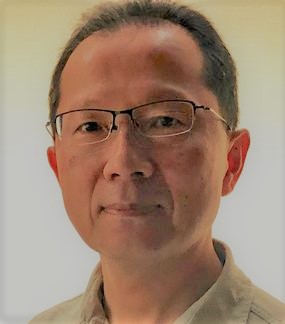
Ushio Saito
(Chair of Landscape & Design Committee)
During the period between the end of the 19th century and the beginning of the 20th century, a genre of beauty, functional (technological) beauty, was added to the conventional natural and artistic genres of beauty. As for construction, mechanical rationality is regarded as a source of functional beauty. However, since civil-engineering construction is subject to restrictions in terms not only of mechanical rationality but also workability, operation and maintenance characteristics, it is not easy for construction to purely express functional beauty.
The major structures in the railway sector include railway bridges that span rivers and railway viaducts built on the ground. Let me refer to those constructions collectively as “railway bridges”. They also are subject to many restrictions, such as the loads of the trains, complex conditions of the bridge, and effectiveness of management. Despite those restrictions, Western European countries have overcome them with creativity, and created many examples of rich functional beauty. In contrast, there are a few good examples in Japan of equivalent beauty.
However, that does not mean that engineers in Japan were not interested in the beauty of railway bridges, as evidenced by guidebooks such as Guidance on the Landscape Design of Construction (JR East, 1995) and Guidance on the Landscape Design of Railway Construction (former Japan Railway Construction Public Corporation, 1997). With a view to exporting Japanese railway bridges, I believe the demand for design technologies for beautiful railway bridges will increase.
Accordingly, the JSCE Landscape & Design Committee started its activity as the Sub-committee for Railway Bridges for a limited period of time in 2018. Our aim is to enhance the aesthetic design technologies for railway bridges and to clarify how railway infrastructure should be. We would like such infrastructure to contribute to the development of the areas around stations and that of the towns along the railway line. We intend to publish a book on design technologies, compiling the fruits of our work. The book will not be limited to the quest for the ideal functional beauty of railway bridges, but will consider on-site issues such as workability and operation and maintenance characteristics. An ideal theory alone will not be supported by railway engineers. And The attraction of railway bridges is not limited to functional beauty. We seek new railway bridge design technologies from this standpoint.
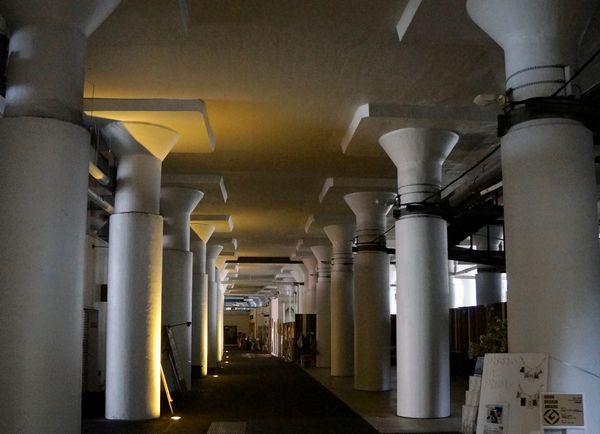
The Utilization of Space Underneath the Elevated Railway Tracks (Akihabara 2K540)
(Photo by Yoshihito Hatakeyama)
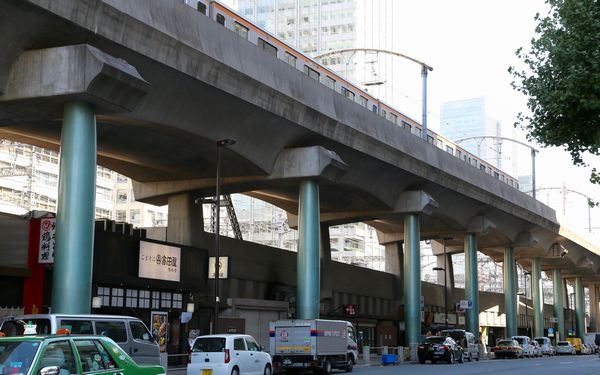
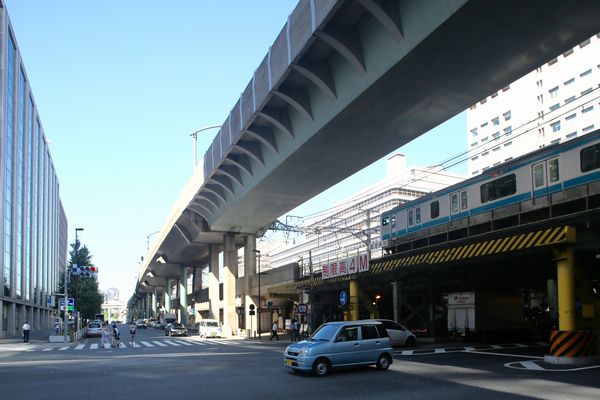
Railway Viaduct of Chuo Line, Tokyo Station (Photos by Ushio Saito)
【Reported by Ushio Saito, Chair of Sub-committee for Railway Bridge, Landscape & Design Committee】
Report on Second Young Engineers' Lounge “DOBOKU”
JSCE International Activities Center, Professional Development Educational Program Group set up Young Engineers’ Lounge “DOBOKU” that consists of mini-presentation by the invited young engineers who have experience in overseas project, and free-talking session with a participant. It provides opportunities to talk together about overseas project such as the difficulties and the challenges they have had in their project from young generation’s point of view, and provide messages to young engineers who is going to be active overseas.
On 17th June, 2019, Young Engineers’ Lounge “DOBOKU” was held, inviting Hidetoshi Matsushita from Nippon Koei Co., Ltd. as a lecturer, with about 10 participants.
First, the lecturer introduced the railway rehabilitation project in Cambodia and his duties in that he engaged in before. Subsequently, he explained the hardship in the management, such as countermeasures to a technical problem, operation with the contractor having different sense of values, measures against the trouble caused by local staff frequently.
The lecturer also explained that in addition to improvement of his ability to perform general duties, he learned forestalling management against anticipating risk and necessity of being conscious of interest among the parties. He has become mentally tougher by experiencing of the above-mentioned challenges.
Besides the questions about project and duties, participants made question about private aspect, for example living environment, daily life, foods, how to spend holidays, frequency to go back to Japan, means of communication with his family in Japan, English skills before being engaged in an overseas project, and whether he had wished to work abroad.
The participants seemed to be stimulated by every word from the lecturer that showed the confidence and sense of achievement which he gained from fulfilling the duties in the project abroad and contribute to development of Cambodia.
The organizer thought that there is significance to continue this lounge because it is a good opportunity for young engineers to know the project, daily life and attraction of overseas projects across to young engineer carrying the future.
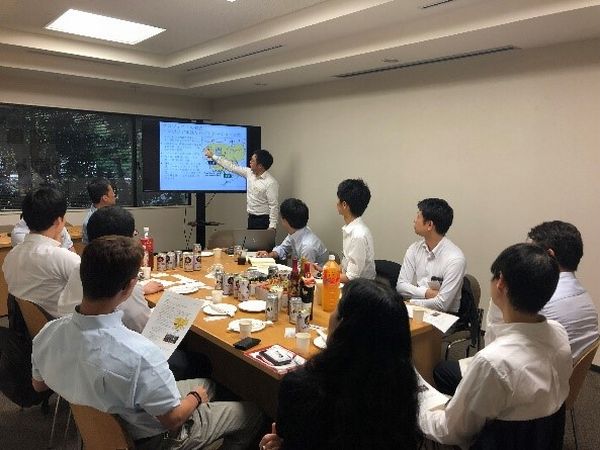
Presentation by Mr. Matsushita, the Lecturer
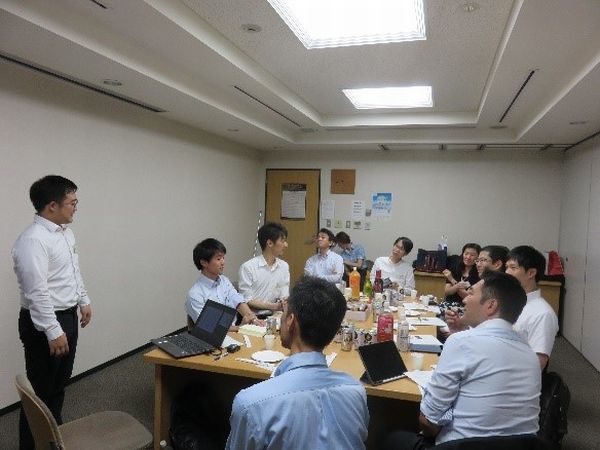
Free-talking Session
【Report by Jyutaro Umezu (Professional Development and Education Program Group, IAC)】
MLIT-JICA-JSCE Joint Session on Quality Infrastructure at CECAR8
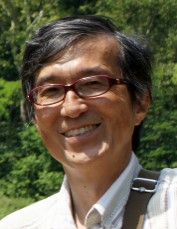
Tamon Ueda
(Hokkaido University)
As the concluding sessions for series of related sessions starting in 2017, JSCE IAC jointly organized Session on Quality Infrastructure with Ministry of Land, Infrastructure, Transport and Tourism (MLIT) and Japan International Cooperation Agency (JICA) on 17th April 2019 at CECAR8. Through Joint Session we aimed at achieving (1) Reconfirmation of necessity of infrastructure development as the countermeasure of problems in Asian countries, and (2) Common understanding of importance of “quality infrastructure”. The joint session was opened by addresses of the organizers, MLIT, JICA and JSCE to introduce the objectives.
Session 1 organized by JSCE was entitled “Importance of Quality Infrastructure – Case studies”. There were four presentations as shown in Table 1. Through the presentations we could learn why to achieve, how to achieve, and how to evaluate “quality infrastructure”. Sustainability as SDGs indicate is the reason why we need quality infrastructure. There are issues at each stage of design, construction and maintenance of infrastructure for achieving quality infrastructure. Cost and user convenience are the indexes for evaluating quality infrastructure.
Table 1 JSCE Session on Importance of Quality Infrastructure – Case Studies
| Presenter | Presentation Title |
| William Kelly, USA | Assessing Quality of Infrastructure in the United States |
| Wu-Te Ko, Taiwan | Status and Challenges of Quality Management for Infrastructure in Taiwan |
| Paul Louis Mitchell, Australia | Optimized Management of Aging Infrastructure in Australia |
| Katsuji Fukumoto, Japan | Expanding Japanese Construction Technologies Overseas Infrastructure in Higher Quality |
JICA organized Session 2 “Quality and Resilient Infrastructure in Asia: How can investment gap be bridged?”. There were four presentations as shown in Table 2. The session discussed the methodology for estimation of infrastructure demand, including demand for maintenance and repair. Two presentations showed the estimation methodologies for railway and flood control infrastructures in Asia. The last presentation showed a case study in Japan on the spillover effect of infrastructure investment, which can stimulate private investment.
Table 2 JICA Session on Quality and Resilient Infrastructure in Asia: How Can Investment Gap Be Bridged?
| Presenter | Presentation Title |
| Koki Hirota, Japan | Quality and Resilient Infrastructure in Asia: How Can Investment Gap Be Bridged? |
| Hiroshi Takeuchi, Japan | An Analysis of the Future Demand for Urban Railways in Asia |
| Mikio Ishiwatari, Japan | Estimating Demand for Flood Protection Infrastructure |
| Ke Seetha Ram, Satoshi Miyazawa, India | Unlocking the Spillover Effect of Infrastructure and Improving Quality of Life: New Insights for Private Sector Investment in Developing Countries |
Session 3 entitled “Infrastructure Development and Economic Growth” was organized by MLIT. Table 3 shows four presentations in this session. The session discussed the contribution of infrastructure development on economic growth and the minimizing negative effect of infrastructure development on economic growth through the case of PPP in Indonesia and disaster prevention measures in Philippines. The presentation explained that investment for quality infrastructure brings high efficiency and benefit, which can promote private fund and fill the gap between demand and fund. The examples of quality infrastructures in Japan were introduced, which bring the economic growth. It was explained that maintenance and repair of existing infrastructure is a key for quality infrastructure.
Table 3 MLIT Session on Infrastructure Development and Economic Growth
| Presenter | Presentation Title |
| Sutanto Soehodho, Indonesia | Funding Scheme on Publicprivate- Partnership (KPBU) |
| Maria Catalina E. Cabral, Philippines | Disaster Risk Reduction through Resilient Public Infrastructure: Examples from the Philippines |
| Koki Hirota, Japan | Securing Fund And Quality Infrastructure |
| Yasuhiro Okumura, Japan | Quality Infrastructure in Japan and Its Overseas Expansion |
The closing session summarized the points of valuable contributions on various aspects and emphasized that we need to continue the discussion between countries exporting and importing quality infrastructure on clarifying benefits of quality infrastructure and finding the way to fill the demand-fund gap.
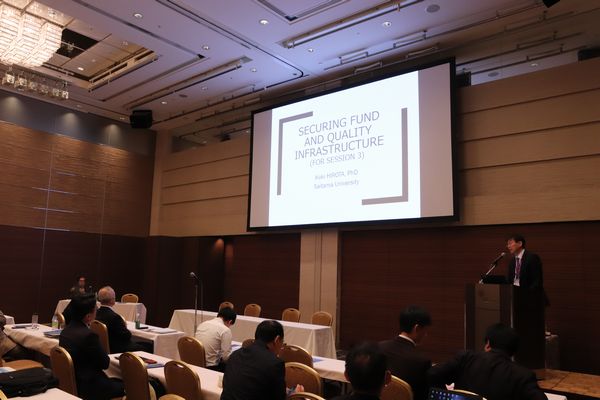
Professor Hirota Discusses Impact of Infrastructure Development on Economic Growth
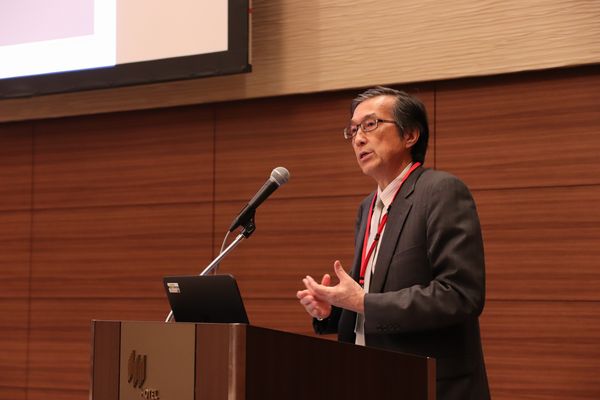
The Chair Summarizes Three Sessions
【Report by Tamon Ueda (Hokkaido University)】
Updates
-
Japanese Civil Engineers the Global Leaders Symposium Series No.14 (August 28)
http://committees.jsce.or.jp/kokusai/node/146 -
2019 JSCE Annual Meeting International Program (September 3-4)
http://committees.jsce.or.jp/kokusai/node/145 -
The 21st International Summer Symposium (September 3-4)
http://www.jsce-int.org/node/592 -
The International Infrastructure Archives
– A Compilation of Japan’s Greatest Projects in Transfer of Civil Engineering Technology in Service –
http://www.jsce.or.jp/e/archive/ - Asian Civil Engineering Coordinating Council (ACECC) International Newsletter
http://www.acecc-world.org/newsletter.html
- IAC “News Pick Up!!” on the JSCE Japanese website
http://committees.jsce.or.jp/kokusai/node/138
- Summary of featured articles in JSCE Magazine Vol. 104, No.8 August 2019
http://www.jsce-int.org/pub/magazine
- Journal of JSCE
https://www.jstage.jst.go.jp/browse/journalofjsce
IAC News Subscription
The IAC News is one of the communication tools to share information and ideas with the members. We would like to invite you, your friends and colleagues to join the communication and to subscribe the IAC News. Please register online: (http://www.jsce-int.org/node/150). We look forward to meeting you.
